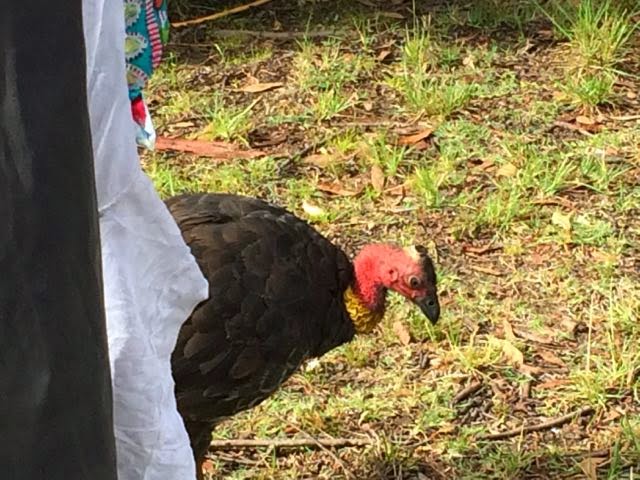🔹 🔹 🔹 🔹 🔹 🔹 🔹 🔹 🔹
I can't believe that the last time I updated my travel blog, it was to write about Berrima which was in February and it is now nearly May and we are crossing to Tasmania on Monday night, 27th April 2015.
Originally we were booked to go to Tassie at the end of March but when we tried to make caravan park bookings we found out that everything was pretty much booked out because of school holidays, Easter and the V8 Super Cars. One person told us that there are free camps (which we know) but our chances of getting in any of them was less than zero. So, not being in any rush, we delayed the trip by a month.
So where have we been since Berrima.
We have stayed at Gundagai, Rutherglen, Beechworth, Seymour, Melbourne, Rosedale, Moe, Franklin River Reserve (Toora), Leongatha, and Phillip Island and back to Melbourne.
Along the way we have visited Corowa, Bright, Milawa, Warragul, Morwell, Traralgon, Walhalla, Yarram, Toora, Foster, Wilsons Promontory, Korumburra, Inverloch and Wonthaggi (twice).
You can see that we have been to a number of places in the past two months. It seems a lot when it is written down, it but it has been a lazy trip around the country side. All the places we have been to with the exception of Corowa (just didn't like the place) were great and we would certainly go back one day.
We absolutely loved our bush camps at Rosedale and the Franklin River where we stayed twice although we were naughty and stayed much longer that then the 48 hours allowed the second time we were there. If fact, we became “known”! When Nick and John went into Foster, a shop person said “Oh, you are the people in the two caravans at Franklin who have been there for a while”. They then proceeded to say that the council didn't like all the fires that were being lit on the grass there. And there were a lot of burned patches of grass because people just don't care and make fires anywhere without any thought of the damage they are causing. Over Easter the place was packed and it seems that people were staying there for a couple of weeks or more but tended to stay on the lower side next to the river which is not visible from the road. We on the other hand stayed up the top near the road because we would get more solar power there…. if the sun came out that is.
Anyway, John was able to tell them that we used an existing fireplace, and that he had gathered stones to surround it to make it safe and that when we left, we would remove the stones, the ash and put soil and mulch there in the hopes that the grass would grow after some rain. Mind you, it was a bit wet and John and Nick had to pull the local council worker out when his ride-on mower got bogged. He got bogged twice but another council worker came along and got him out the first time.
 |
| Our fire at Franklin River Reserve, Toora, Victoria |
The next few posts will run through where we have been but Nick and I did Gundagai down to Melbourne without Deb and John. So, starting with Gundagai, home of the “Dog on the Tuckerbox”. No photo for you though. The historical monument is only 8 km out of town but as we were on an overnight stop, we didn't want to unhitch and go there. A Tuckerbox is Australian slang for a lunchbox. The “Dog on the Tuckerbox” was made as a tribute to pioneers and the statue was inspired by a bullock drover’s poem, Bullocky Bill, which celebrates the life of a drover’s dog that guarded a man's tuckerbox. The statue was unveiled by the then Prime Minister of Australia, Joseph Lyons, on 28 November 1932.
Gundagai is a lovely typical country town with nice friendly people, old houses and buildings, some well kept, some not so. It is a bit hilly but there was a lovely walking/cycle track covered by huge trees which also had a playground. As usual, we went for a walk around which is the best way to see a place. We passed some friendly locals who had met at a coffee shop and I would have liked to have joined them but Nick had left his wallet behind so …no …..coffee.
Along the walk before a bridge crossing the Murrumbidgee River is a marker showing the high flood marks. You can see it here in the photo with the bridge and the river behind it. The highest was 41ft 4 inches (just over 12 metres) on 3 July 1853. Standing there it is hard to comprehend that much water. More recently, on 3 March 2012, the flood level was 35 ft 9 inches (just under 11 metres).
 |
| Flood Marker - Murrumbidgee River - Gundagai |
 |
| Undercover 5 o'clock Drinkies...., |
Next stop ….the Victorian High country.




















